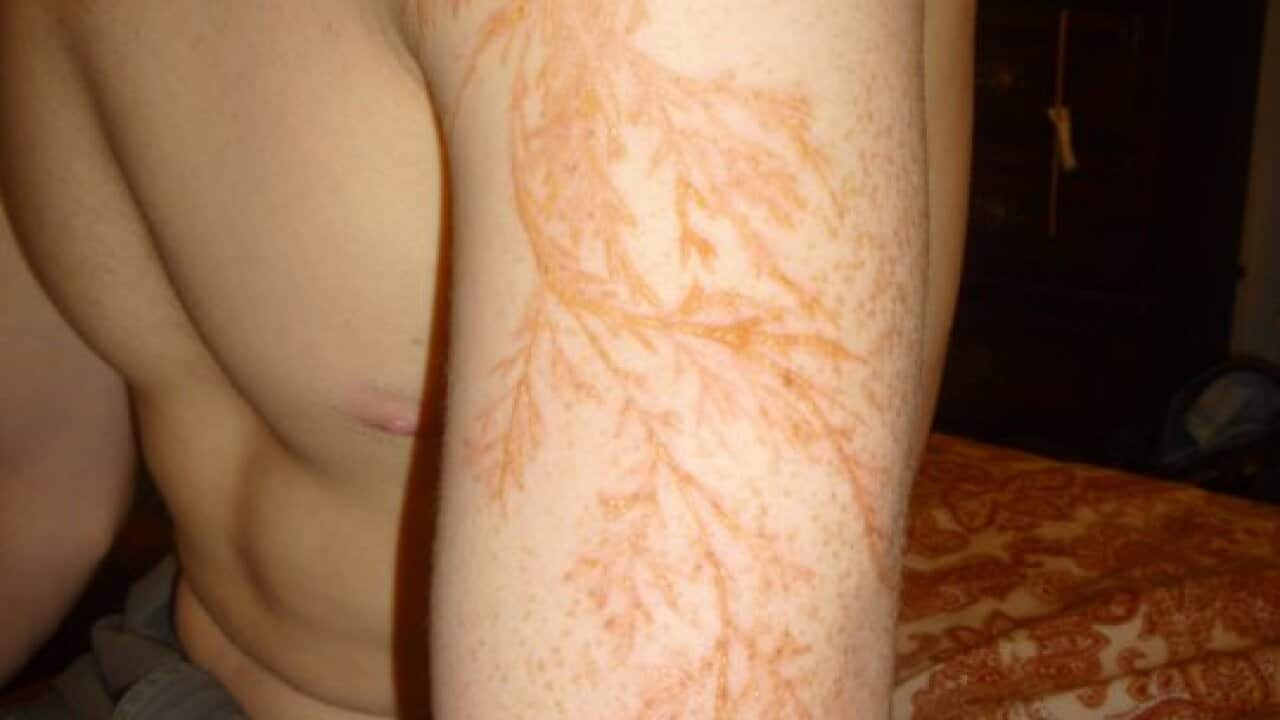There was a strange and unusual image floating around the web.
Anonymous body parts covered in delicate spidery ferns patterns, these branch-like marks at first look like tattoos or body scarification.
But they are the bizarre and mysterious scars that appear on people’s bodies after they are unfortunate enough to have been struck by lightning.
Thus I disappeared down the rabbit hole of the science of lightning strikes.
LIGHTNING STRIKES MORE THAN TWICE
According to the Royal Society for the Prevention of Accidents (ROSPA), on average three people die in the UK each year from lightning strikes.
In the US, deaths have been declining, but they are still in the region of 30 a year. More than 85% of those killed are male.
In Australia, there’s no up-to-date data, although one paper says there were at least 650 deaths between 1824 and 1991. Again there is an overrepresentation of males, the predominant group is males aged 15–19, followed by males aged 20–34. The only imaginable explanation is the tendency of that group to play outdoor sport or to take reckless risks.
HOW DOES ELECTRICITY FORM SCARS?
Some victims, depending on the conductivity of the environment they are struck in, experience burns akin to the application of external temperature.
In the hours or days after a some victims are struck, capillaries under their skin rupture from the shock wave of lightning discharging over their skin. German physicist Georg Christoph Lichtenberg discovered these discharge patterns in 1777.
What’s more, these creepy patterns can also appear on the ground around the point the lightning bolt hits the ground.
Even some victims of electrical shock, the high voltage electricity that surges around the grid and into homes can also cause this unique pattern.
Sometimes a corresponding pattern is created below the ground. Petrified lightning or Fulgurites result from the intense heat fusing sand into glass in a root-like shape.
The Bureau of Meteorology says “If you hear thunder, find shelter urgently, especially if the time delay is less than 30 seconds. Try to remain sheltered for at least 30 minutes after the last sound of thunder.
“The distance (in kilometres) to a lightning flash may be estimated by dividing the time delay (in seconds) between the flash and the thunder by 3.”
SEARCHING FOR VICTIMS
I scoured local newspapers for victims around Australia to see if I could film their scars. From Bendigo to Gympie, South Australia to Tasmania, I hunted down recent victims.
Tasmanian strike victim and Storm Chaser turned police recruit David Simpson told me about his experience.
“I didn’t receive a scar, but the boot I was wearing did have an entry and exit hole but I have since lost the boot, unfortunately.” he said.
I contacted Steve Marshburn Lightning Strike & Electric Shock Survivors International (LS&ESSI) to no avail.
It was harder than it seemed.
But Dr Chris Andrews, Australia’s foremost expert on the medical effects of lightning strikes, had the worst news of all.
“Lightning tree scars only sometimes appear within hours of incident and tend to disappear within days,” he said.
Sadly, apart from a few rare and photographically documented cases, the fact they fade, even disappear, means the chances of finding anyone with scars today is exceptionally rare.
So after all that searching, the evidence of these strange scars I so badly wanted to find, is as momentary and as ephemeral as the lightning that creates them.


